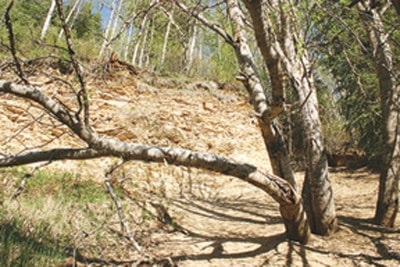Fifty million years ago, subtropical conditions in the Valley's shallow lakes and wetland swaps created a prime environment for plant, animal and insect life to flourish. Remarkably, the fossils of these life forms were preserved and are visible today, at the Driftwood Creek fossil beds. A million years ago, lava flow formed a layer over the ancient deposits in the lake beds. Melting ice of the last ice age then formed a canyon through the wetlands and revealed the reminders of a time long ago, frozen in the shale. The Driftwood Creek fossil beds were discovered around 1900 and remain one of the world's most significant fossil beds today. The fossils are protected by the 21-hectare Driftwood Canyon Provincial Park, created in 1967 to preserve this natural wonder. Even after years of fossil hunters pillaging the site, many of the fossils remain today. The park has the distinction as being the site of the oldest known evidence of salmon (oesalmo driftwoodensis) considered to be the missing link between trout and salmon, however, plant fossils like the dawn redwood are most common. Identifiable as a dark brown or black imprint against the light brown shale canyon walls, you can even pick your own ancient fossil souvenir — as long as it's collected on Crown land is for personal use. It cannot be dug from the ground or sold. The park is complete with lookout, day-use picnic area with benches and fire pits, as well as toilets. There is also interpretive information provided by the park on site. Driftwood Canyon Provincial Park is located on Driftwood Creek Road, on the Fraser Plateau, 10 kilometres northeast of Smithers. Take Highway 16 to Old Babine Lake Road and follow the signs from there.
